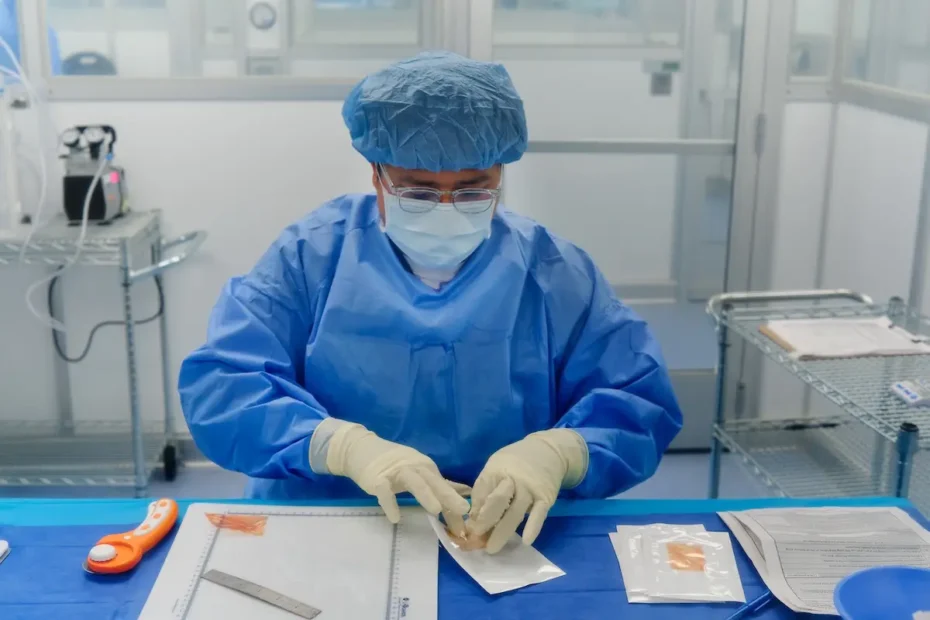The advanced wound care industry has made headlines in the past year, mostly due to the staggering amount of money tied to it.
In 2024, Medicare reimbursed $10 billion for grafts used to combat chronic wounds. That amount is twice as much as it was in 2023, and nearly 40 times as much as the amount reimbursed in 2019.
With more manufacturers flooding the market and reimbursement rules creating opportunities for abuse, the conversation has shifted. More and more people are asking the same question: Why is advanced wound care so expensive?
The truth is, advanced wound care costs aren’t just about the material itself. It’s the result of a mix of legitimate costs, systemic inefficiencies, and in some cases, loopholes that have allowed prices to spiral out of control.
Let’s break down the biggest reasons:
Working with Human Tissue is Complex and Costly

Placental grafts aren’t your average wound dressing. They’re made from ethically donated placentas, which contain three distinct layers: the amnion, the intermediate spongy layer, and the chorion. These layers are naturally rich in collagen, structural proteins, immunogenic factors and growth factors that help kick-start the body’s healing process for stubborn, chronic wounds.
Turning this raw material into a safe, ready-to-use medical product is a highly sophisticated process. Manufacturers follow strict handling protocols similar to those used for organ donations.
The tissue is carefully cleaned, processed with “minimal manipulation” to preserve its natural healing properties, and in some cases layered to create thicker, collagen-rich grafts. Each one is sterilized to hospital-grade standards and packaged for long-term stability.
This level of precision and safety doesn’t come cheap, but it’s essential when you’re putting human tissue on a patient’s wound.
Innovation Costs More Upfront
Like most new medical technologies, advanced wound care treatments come with a premium price tag in their early days.
Manufacturers are investing heavily in research, specialized equipment, and highly trained staff, but they’re producing in smaller batches. That means all those fixed costs are spread across fewer grafts, driving the price up.
Over time, as production scales up and more clinics adopt the treatment, manufacturers can produce larger volumes at lower per-unit costs. That’s when we typically see prices start to come down.
In other words, while advanced wound care is still in its “startup phase” from a manufacturing perspective, the long-term trend should make it more affordable for both healthcare systems and patients.
The System Lets Manufacturers Pick Their Own Price

At the same time, Medicare in 2020 created a loophole in the system that essentially allowed graft manufacturers to set any price they want for skin substitutes, including placental grafts. It didn’t take long for bad actors to take advantage of it, charging outrageous amounts for products that weren’t necessarily clinically superior.
The good news is that authorities are cracking down. Federal investigators have already prosecuted a number of fraud and abuse cases, which is a step in the right direction.
Now, lawmakers are exploring legislation aimed at closing that loophole. We’re hopeful they’ll find a compromise that balances cost control with patient access.
Ultimately, the goal is smart regulation. We need rules that keep prices fair without limiting access to life-saving wound care.
Bringing Advanced Wound Care to a Patient’s Home Isn’t Cheap
Mobile healthcare has been proven to save the healthcare system millions by preventing ER visits, reducing hospital stays, and reaching patients before small problems become big ones. In fact, some studies suggest every dollar spent on mobile care generates $12–$36 in long-term savings.
But here’s the flip side: while mobile wound care eliminates the overhead of a permanent clinic, each visit still has to function like a fully equipped, sterile treatment room on wheels. That means bringing advanced grafts, wound prep supplies, and specialized equipment to the patient, plus a highly trained provider who can deliver hospital-grade care in the home.
This model is worth it because it improves access and outcomes, especially for patients who can’t easily travel (which is often the case with chronic wound patients). But the logistical investment required for each visit is part of what makes advanced wound care expensive, even if it saves the system money in the long run.
The Real Cost Is in Doing Nothing
When traditional treatments aren’t healing a chronic wound, paying for advanced wound care almost always costs less money.
It may feel expensive up front (even if you’re likely paying $0 out of pocket), but it can be significantly less than being stuck in a cycle of conservative care that’s not healing your wound.
Don’t wait until a wound turns into an infection, amputation, or worse. Talk to your care team today about whether advanced wound care is right for you, and send us a note.
Disclaimer: This blog is for general information only. It is not medical advice and does not determine or advise on benefits coverage. For medical concerns, talk to a healthcare provider. For benefits questions, contact the appropriate agency or your insurer.
